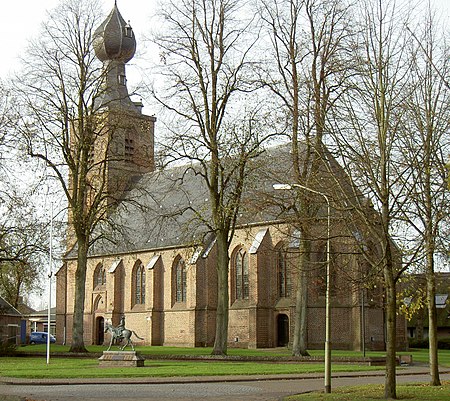Dwingeloo
Former municipalities of DrentheMunicipalities of the Netherlands disestablished in 1998Pages with Dutch IPAPopulated places in DrentheWesterveld

Dwingeloo (Dutch: [ˈdʋɪŋəloː]) is a village halfway between Meppel and Assen in the Dutch province of Drenthe. It is a part of the municipality of Westerveld. The village is known internationally because of the radio telescope of the Dwingeloo Radio Observatory (which at the time of its completion in 1956 was the largest radio telescope in the world), located on the edge of the Dwingeloo Heath, 3 km south of the village. The telescope discovered Dwingeloo 1 and Dwingeloo 2, two galaxies about 10 million light-years away from the Earth in the constellation Cassiopeia.
Excerpt from the Wikipedia article Dwingeloo (License: CC BY-SA 3.0, Authors, Images).Dwingeloo
Weverslaan, Westerveld
Geographical coordinates (GPS) Address Nearby Places Show on map
Geographical coordinates (GPS)
| Latitude | Longitude |
|---|---|
| N 52.834444444444 ° | E 6.3705555555556 ° |
Address
verzorgingshuis 'de Weijert'
Weverslaan 1a
7991 BN Westerveld
Drenthe, Netherlands
Open on Google Maps








